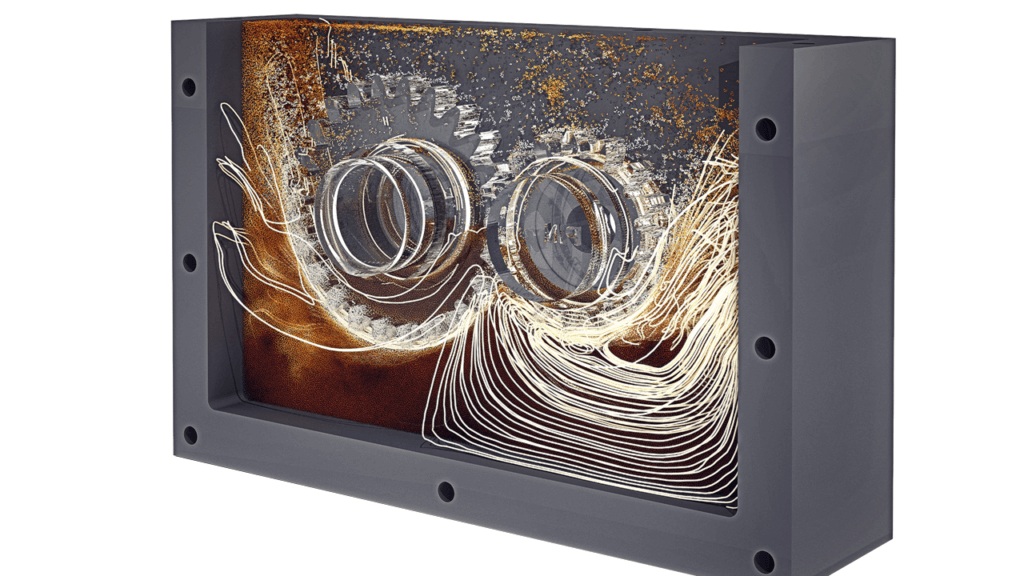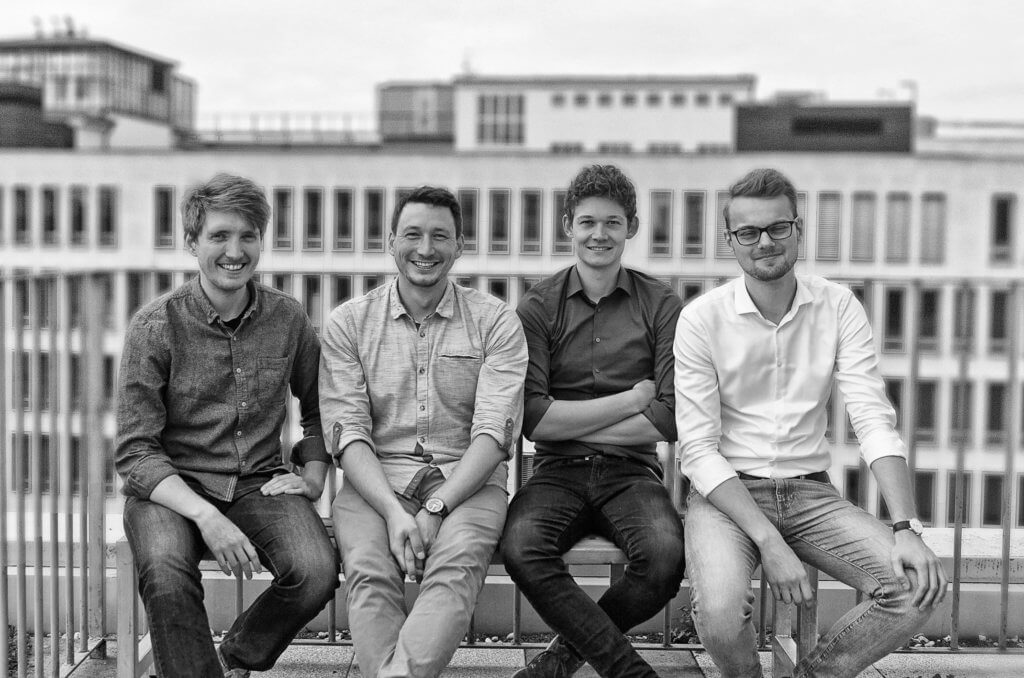Simulations in the cloud
Judith Hillen
How can processes such as the filling of containers or moulds be optimised or the behaviour of complex liquids such as blood be predicted? The Berlin startup dive solutions has developed a simulation software with which complex dynamic processes like these can be modelled more easily than before. You don't have to install any software to do all this, just log in to your browser. In an interview with 5-HT, Pierre Sabrowski, one of the four founders and CEO of dive solutions, explains how this simplifies communication, reduces administrative effort and makes it easier for various participants to work together.
Which processes can be modelled with the simulation method from dive solutions?
Our method is suitable for the simulation of liquids, gases or granular media in dynamic machines or processes in which many things are in motion, such as water or oil. A classic example would be the simulation of oil in a gearbox or the simulation of nozzles from which a liquid escapes. There is some movement, liquid splashes through the area, and this is very difficult to simulate with classical methods.
How does your simulation method differ from the existing ones?
The classical methods are grid-based. This can be imagined as a mosaic in which each particle is static in principle. But if you want to simulate a dynamic process, for example how oil flows through a gearbox, it quickly becomes very complex and complicated. For every small movement that takes place, the mosaic has to be rebuilt. It's different with our gridless, particle-based simulation. You can imagine it like a ball bath: The balls simply follow the current, are displaced in a natural way when an obstacle arises, and flow on by themselves. This makes completely new simulations possible. You suddenly have the opportunity to solve very complex cases in a relatively playful way.
 Simulated gearbox
Simulated gearboxWhat application examples can you imagine for this in the chemical or pharmaceutical industry?
In chemistry or process engineering, there are a number of processes involving liquids, gases, granular media or mixtures of any complexity out of it. In general, our method is also suitable for everything in relation to nozzles or the mixture of items. In particular, filling processes in the manufacturing of metal or plastic parts are requested – with a grid-based method this is often difficult or not even possible to model.
In the pharmaceutical and medical sectors, for example, we simulate the behaviour of blood. How does it flow in the human body? What happens through intravenous access or how does the blood flow through external machines? The movement of powder or other granular media can also be well simulated with our simulation.
Your software does not have to be installed first but is accessible via a browser-based platform. What are the advantages for the user?
This makes the processes much simpler and reduces the administrative effort: You no longer have to install any hardware or software but can simply log in online and get started. This means that different parties can be involved in a project, more simply together. Normally, only the simulation engineer has the software installed on his computer. When he tells his manager about the status he must first of all convert his results into an screenshot, integrate this in a PowerPoint presentation and send it to his boss. With us, he can simply send the product manager or product designer access via a link so that he can view the simulation results directly or download them as a video. This reduces the communication effort, which is often considerable in simulation departments.
Apart from simulation, what other features does your software offer?
Our platform also allows you to view project progress information, which is especially interesting for the project manager. You can also check exactly what costs have been incurred so far. If you buy your own server, you can't assign exactly which project has used how much server power. However, because we make the hardware available depending on the payload, the costs can be allocated precisely so that cost control becomes more transparent.
How does the operation work for the user - what knowledge is necessary?
The particle-based method is very easy to use. Our idea is to empower the product designers so that they can perform even smaller simulations in the future. The simulation engineer then prepares the process and sends a link to the product designer. The product designer can then make minor changes himself, analyze the results and come up with new ideas.
How did dive solutions come about?
dive solutions emerged from the Bosch Group. Together with my co-founders Maik Störmer and Johannes Gutekunst I worked in a team at BSH Hausgeräte GmbH that simulated dynamic washing processes. In a cooperative project with various Berlin universities, we developed our technology, grew together as a team, and became so large that we were advised to continue as a spin-off in 2017. We knew our fourth co-founder, Felix Pause, from university. He gained practical experience in everyday engineering at Siemens, which perfectly rounded off our founding team.
 The founders of dive solutions: Pierre, Maik, Johannes and Felix (from left to Right)
The founders of dive solutions: Pierre, Maik, Johannes and Felix (from left to Right)What happened after the company was founded - and what is the current status of developments?
In our first year, we were supported by the EXIST start-up scholarship and learned during this time how the industry ticks, how to build networks and how to actually turn a technology into a product. In summer 2018 dive solutions was officially founded. We then carried out pilot projects to see where the software could be improved. This summer we got the first investors on board. We are currently strengthening our team: We are looking for employees in development, marketing and sales, companies can already acquire licenses today and use our product in the beta phase. We work particularly closely with our customers to ensure that feedback is immediately incorporated into further development. By the end of the year, we want to massively increase functionality.
Together with eleven other startups, you took part in our X-Linker program in May 2019, which included various mentoring sessions and allowed startups to network with investors and corporates. What did you take with you from the program - what did it result in?
We're sceptical about coaching programs, so we went with reservations, but we have to say that it was one of the best startup events we've taken part in. We have built a sustainable network - not only in terms of customers, but also in terms of supporting young companies. We also noticed that the density and quality of contacts in the industry in Mannheim/Ludwigshafen and especially in the X-Linker had a lot to offer companies like us.
What is your vision for the future of dive solutions?
We want to increase the breadth of application scenarios so that our software can map more technical cases than is already possible today, and we want to support industry in carrying out and optimizing simulation processes in the cloud. In short: We want to be known for the fact that we get Cutting Edge technology in order to be able to carry out simulations in the most efficient way and finally to accelerate development processes. To achieve this, we want to use our product set a new standard.
5-HT Chemistry & Health Newsletter
Want the latest tech and industry news, events, relevant info from the ecosystem and more?
Subscribe to 5-HT Newsletter now Subscribe to 5-HT Newsletter now
Become part of the 5-HT Chemistry & Health
Exchange ideas with innovative startups and future-oriented companies in our ecosystem. We look forward to meeting you!